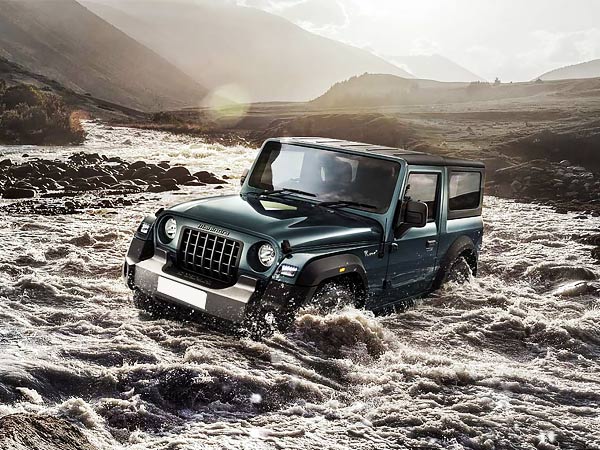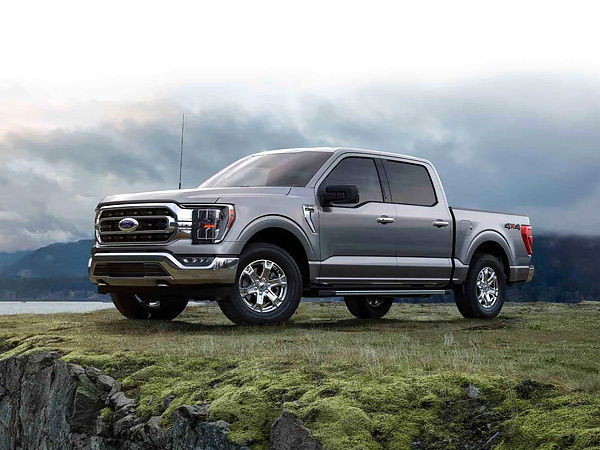Car jargon may be perplexing at times. Other than the notions of 4WD vs AWD, few other illustrations bear this out.
So, what is the difference between 4WD vs AWD in current cars?
First, as the name implies, all-wheel-drive drives both the front and back wheels simultaneously. On the other hand, 4WD refers to a circumstance in which a driver-selectable system mechanically engages the drive to all four wheels.
As a result, a layman’s definition of 4WD is a ‘part-time system’ for a car, but an all-wheel-drive automobile has a ‘full-time system,’ which means all four wheels of the car. They are constantly ‘powered.’
The notion of 4WD is most typically seen in modern SUVs, particularly family SUVs and mid-size SUVs. It is more typically applied to vehicles built to employ the greater traction of 4WD in off-road circumstances.

Furthermore, the term “AWD” has evolved to refer to a vehicle that drives all four wheels simultaneously. In this situation, the system of a car must have some device, such as an electronically controlled clutch, that allows for a rotational difference between the automobile’s front and back axles.
What Exactly Is AWD?
As the name implies, all-wheel-drive cars employ systems that power both the front and back wheels. There are two types of all-wheel-drive systems to be aware of. The first technology is known as All-Wheel-Drive (AWD), and it continually drives all four wheels. The second technology, part-time all-wheel-drive or automated AWD, only employs AWD when necessary. Most of the time, these part-time systems operate in the two-wheel-drive mode (which can save gasoline), switching to AWD only when traction is required.
What Is the Mechanism of AWD?
Full-time and part-time AWD systems normally run with no driver input, while some selectable feature modes give some control over how much power flows where. Torque is sent to all four wheels via a set of differentials, viscous couplings, and multi-plate clutches, which assist in distributing power to the wheels and optimizing traction. Under normal circumstances, the car continues to run well.
AWD FULL-TIME
Both the front and rear axles are always driven in full-time AWD. This type of AWD can improve vehicle handling and guarantee that all power is delivered to the road on dry ground. Furthermore, slippery circumstances such as ice, snow, or mud add grip for more constant traction and more confident handling.
AWD PART-TIME
Part-time AWD normally distributes torque to two driven wheels, either the front or rear, depending on the make and model. When the driving conditions require more traction, the technology automatically activates the other two wheels. Modern part-time AWD systems include an array of electronic sensors that provide data to a computer, regulating the amount of power sent to each wheel. Another growing vehicle class is AWD Hybrid vehicles, which combine fuel efficiency with all-weather capabilities.

Pros and Cons of AWD
The nicest part of AWD is that the driver does not have to judge whether or not to engage the system. Either all four wheels are driven continuously, or the system is intended to detect traction loss and transfer power where it is needed. AWD is offered on a wide range of automobiles and AWD vehicles, including tiny sedans, performance variants, and all sizes of popular AWD SUVs.
While AWD may perform well in various circumstances, from rain to snow to minor off-roading, it is often seen as a less desirable option by dedicated off-roaders. This view is changing as current AWD systems increase in capability, but many drivers who like to go off the beaten route still prefer to choose when to use 4WD. AWD also raises the price of a car and, in most circumstances, affects fuel economy.
Also Read, Sedan vs SUV: Which should be your Next Car
What Exactly Is 4WD?
4WD is a more traditional technique for driving all four wheels and is more commonly used in pickup trucks and big SUVs. A car with 4WD is likely to be crawling over boulders, off-roading across the desert, or crossing a river with water up to the mirrors.
4WD systems, which are often mechanically connected, employ a series of front, center, and rear differentials and transfer cases and couplings to supply torque to all four wheels. These systems have evolved through time, allowing for the connection and disconnection of 4WD via buttons and knobs. However, many classic 4WD systems are controlled by a floor-mounted lever that resembles a second gear changer.
What Is the Mechanism of 4WD?
4WD systems, like AWD systems, are designed to transfer torque to all four wheels of a vehicle to boost traction when necessary. However, 4WD systems are more resilient than AWD systems and can often handle more difficult terrain. They, too, are classified as full-time or part-time.
Many 4WD systems also feature low and high ranges that the driver may select using an electrical switch or a mechanical lever on the floor. The low level provides the best off-road grip, while the high option is beneficial in slippery on-road situations such as compacted snow, ice, loose sand, or gravel.

FULL-TIME 4WD
Full-time 4WD works similarly to a full-time AWD system, with all four wheels getting power continuously. In some systems, the driver may be able to alter how power is distributed to the front and rear axles via selectable modes.
4WD PART-TIME
It is the true traditionalist of four-wheel propulsion, and it is most commonly seen on trucks and SUVs built to work and play in more harsh circumstances. The vehicle is often propelled by two wheels, usually at the back in this situation. When 4WD is required, the driver must decide to engage it and touch a button or shift a lever. Some systems also allow the driver to lock the car’s differentials for added traction in extreme off-road conditions.
4WD Advantages and disadvantages
4WD vehicles are often the best at dealing with difficult situations, both on and off the road. Even though these systems are now available in well-appointed luxury vehicles and SUVs, they are primarily built for toughness and maximum pulling power. They are ideally suited for work and pleasure in challenging terrain.
The 4WD design has gotten progressively polished in recent years, as has the design of cars that have them. However, depending on the make and model, 4WD is frequently combined with a heavy-duty suspension, resulting in a harder ride than a 2WD or AWD car. These devices can potentially reduce fuel economy and raise the car’s original cost.
Also Read, Pickup Trucks in India: Why can they be better than SUV
Which is the best? 4WD vs AWD
The quick answer is, “it depends.” Drivers can choose the optimal system based on the vehicle’s principal function, driving style, geographic area, and price. In most typical driving conditions in winter weather, 4WD vs AWD cars will give more traction than two-wheel drive vehicles.
Large trucks and SUVs are ideal for towing and moving huge goods, and they often have 4WD rather than AWD. Buyers who need to carry hefty items should consider 4WD. Smaller crossovers, such as the Subaru Forester, Toyota RAV4, or Honda CR-V, are fitted with AWD because they are rarely used for off-roading or heavy hauling.

When is AWD preferable?
AWD vehicles provide more confidence and traction in wet, snowy, or icy driving conditions. AWD systems assist vehicles to get started on slick roads by distributing power to the wheels that need it the most and can even help rectify wheel slip while the vehicle is moving to keep it on the road. The systems are frequently controlled by a computer, which continually measures the traction of each wheel, and it can activate far faster and more precisely than any human driver.
While some all-wheel-drive cars can handle themselves off-road, they are not built for the purpose. Frequent power shifting between wheels is not ideal in rough terrain, and most all-wheel-drive systems aren’t as sturdy or lasting as a 4WD setup.
When is 4WD preferable?
4WD excels in thick snow, mud, rugged or rocky terrain, and steep inclines or dips. Because 4WD systems are more durable than AWD systems, they can withstand greater abuse and power. Low- and high-range settings enable the driver to dial in the optimal amount of power and torque delivery for the scenario.
It’s also a good idea for drivers who reside in rural places or frequently go to these areas to access a 4WD vehicle.
